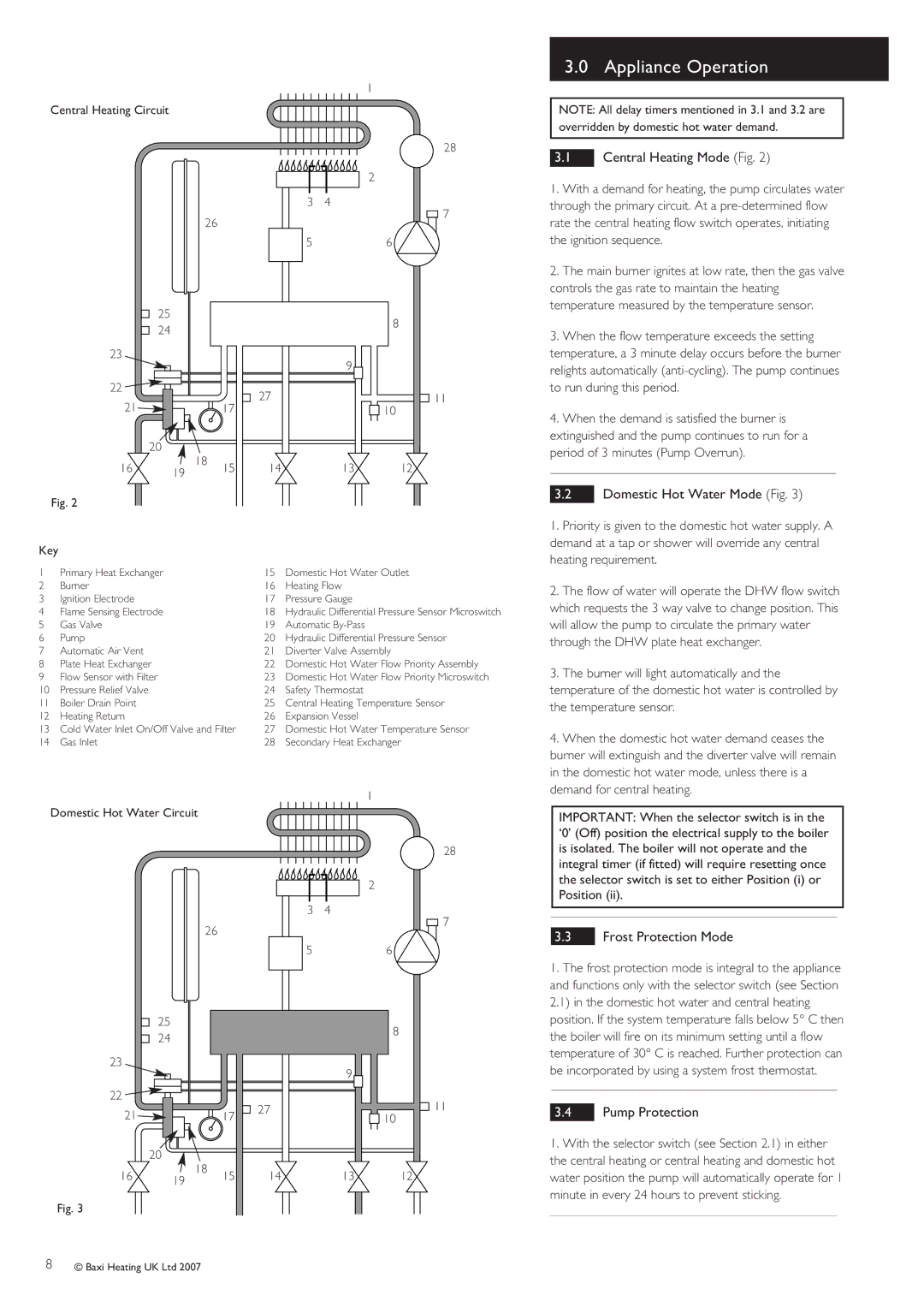30 HE specifications
The Baxi Potterton 30 HE is a popular choice among homeowners seeking an efficient and reliable boiler solution. Recognized for its compact design and advanced technologies, this boiler is ideal for various residential heating needs.One of the standout features of the Baxi Potterton 30 HE is its high efficiency rating, which ensures lower energy consumption and reduced utility bills. With an impressive efficiency of up to 90%, this boiler operates at a much higher capacity compared to older models, making it both environmentally friendly and cost-effective. The 30 HE is particularly well-suited for medium to larger homes with a higher demand for hot water.
The Baxi Potterton 30 HE incorporates a range of innovative technologies aimed at enhancing performance and reliability. The automatic modulation function adjusts the boiler's output according to demand, ensuring that it only works as hard as necessary. This not only prolongs the lifespan of the unit but also maximizes comfort levels in the home.
Another feature of the 30 HE is its low noise operation. This boiler has been specifically designed to minimize sound, allowing it to operate quietly in the background without disturbing daily activities. This makes it an ideal choice for homes where noise can be a concern, particularly in open-plan living spaces.
The compact dimensions of the Baxi Potterton 30 HE make it easy to install in various locations, whether it be in a kitchen, utility room, or even a loft space. Its lightweight construction further simplifies the installation process, saving both time and labor costs.
In terms of user-friendliness, the boiler is equipped with an intuitive control panel that allows homeowners to easily adjust settings and monitor performance. This user-centric design ensures that even those who may not be technically inclined can manage their heating requirements with ease.
Safety features are also a priority in the design of the Baxi Potterton 30 HE. It includes built-in safety mechanisms such as frost protection and a burner pressure monitoring system, which work to prevent overheating and ensure optimal operation.
Overall, the Baxi Potterton 30 HE is an efficient, reliable, and user-friendly boiler that meets the heating demands of modern homes. Its blend of advanced technologies, compact size, and focus on safety make it a standout choice for homeowners seeking a high-performance heating solution.

